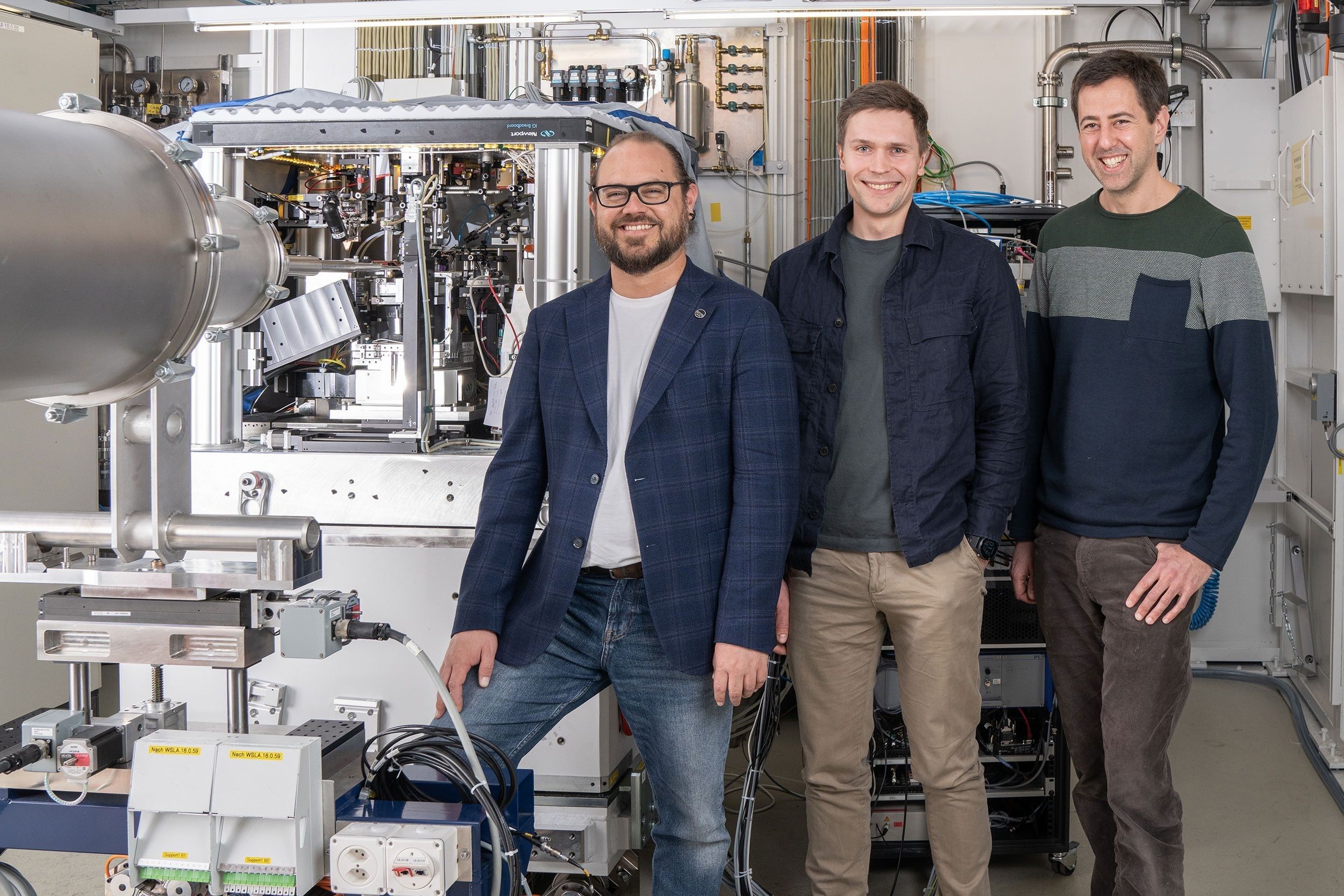Manuel Guézar Siqueiros (left), Thomas Aidoukas and Mirko Höller set a new world record.
At the Paul Scherrer Institute in Würenlingen and Villigen, three-dimensional images of computer chips are created – with a resolution of four nanometers, that is, four millionths of a millimeter.
For 3D images in the nanometer range: Over the course of 14 years, researchers at the Paul Scherrer Institute in Forenlingen and Villigen have developed so-called microscopy methods in collaboration with the Federal Institutes of Technology in Lausanne and Zurich and the University of Southern Germany. California. This in the Laboratory of Macromolecules and Bioimaging.
They recently achieved something special: taking images of state-of-the-art computer chips with a resolution of four nanometers, or four millionths of a millimeter — a world record. In their recordings, the researchers used what is called tectography: a computational process that combines many individual images into a high-resolution image.
Thanks to the shorter exposure time and improved algorithm, they were able to significantly exceed their own world record from 2017. In their experiments, the researchers used X-ray light from the Synchrotron Light Source Switzerland SLS at PSI, the statement said.
Thanks to 3D X-ray, but not sharply
Computer chips are marvels of technology: today it is possible to pack more than 100 million transistors per square millimeter into modern integrated circuits – and this trend is on the rise. But it is not only the production that is involved, but also the characterization and imaging of the created structures.
Scanning electron microscopes allow resolutions down to a few nanometers, making them ideal for imaging the tiny transistors and metal junctions that make up circuits. However, this can only be used to create two-dimensional images of the surface.
However, with X-ray computed tomography, it is possible to create 3D images without destructive effects. Similar to a CT scan in a hospital, the sample is rotated and X-rayed from different angles. Depending on the structure of the sample, the radiation is absorbed and scattered differently. The detector records the emerging light and an algorithm reconstructs the final 3D image.
But: “Here we have a resolution problem,” explains Mirko Höller, a physicist at SLS. “There are currently no X-ray lenses that can focus this radiation to image such small structures.”
The process is not limited to computer chips only.
The solution is called ptychography. In this process, the X-ray beam is not focused in the nanometer range, but rather the sample is displaced in the nanometer range. “Our sample is moved in such a way that the beam follows a precisely defined grid – like a sieve,” explains the physicist. “A scattered image is then recorded at each point in the grid.” In this way, enough information can be recorded to reconstruct an image of the sample with high accuracy using an algorithm. The reconstruction process is essentially a kind of virtual lens.
In order to break the 2017 world record – spatial imaging of a computer chip with a resolution of 15 nanometers – Thomas Aidukas joined the team of Mirko Holler and Manuel Guézar Siqueiros. The physicist supported the team with his programming expertise. Aidukas developed a new algorithm to reconstruct a sharp result with a high light content from a stream of short-exposure images.
This new tectonography process is a fundamental approach that can also be used in similar research institutions. The process is not limited to computer chips, but can also be used for other samples, for example in materials or life sciences.

“Certified tv guru. Reader. Professional writer. Avid introvert. Extreme pop culture buff.”







More Stories
Samsung Quantum Dot TV: Art meets technology
Pitch: €56m for energy startup Reverion
Plastoplan: Plastics for Energy Transition